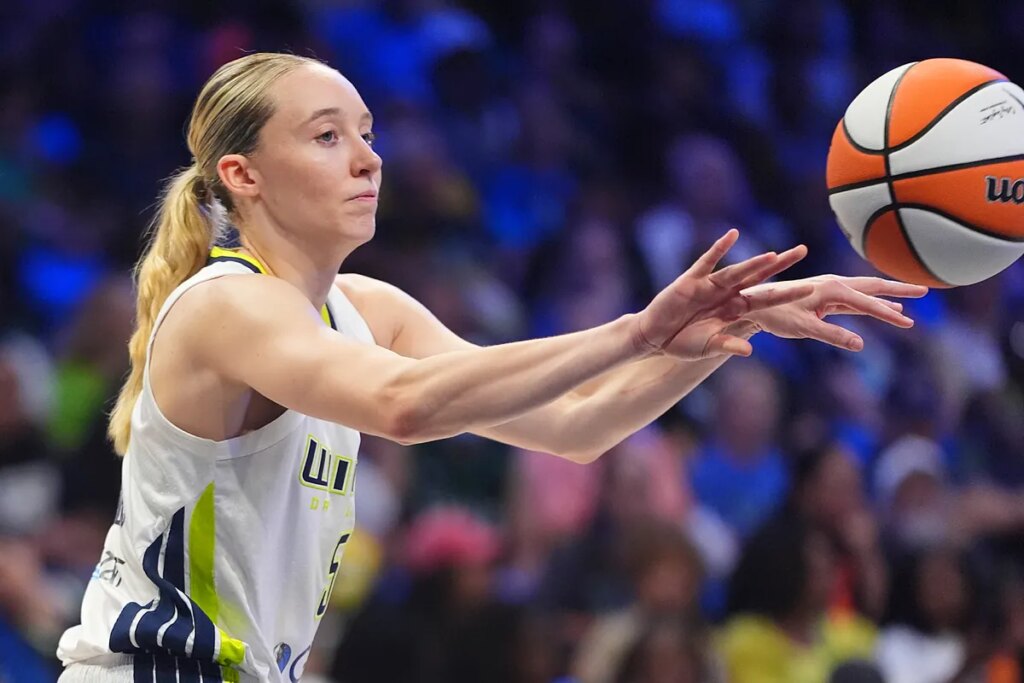Paige Bueckers has always played with an old-school calm. In a recent Dallas Wings game, she faced Golden State’s pressure defense, surveyed her options, then delivered a perfectly timed pass for a corner three.
It was the kind of play you could easily miss on a highlight reel, but it speaks to what makes Bueckers unique in the rookie class-her ability to slow the game down, even as the spotlight speeds up around her.
So far, the numbers are strong: over 18 points per game, nearly six assists, and almost four rebounds each night. For most first-year pros, that alone would be the story.
But Bueckers‘ rookie campaign is about much more than production-it’s a reflection of what the WNBA chooses to celebrate, and how it negotiates the overlapping tensions of race, queerness, and media attention.
How Bueckers and Clark highlight the WNBA’s visibility paradox
While Caitlin Clark of the Indiana Fever draws relentless headlines and debate, Bueckers has quietly notched her own milestones-becoming the first player in league history to surpass 350 points and 100 assists in her first 20 games. The difference isn’t just in their stats or highlight reels. It’s in the way each player is received by the league, the media, and fans.
Both Clark and Bueckers are white women in a league where Black stars have long driven its culture and excellence. Yet the media coverage-and sometimes, fan embrace-of their arrival has underscored the privileges that come with their identities. Bueckers herself acknowledged this reality after winning an ESPY in 2021, using her speech to highlight how “Black women have carried this sport for so long, and they don’t get the media coverage or the shine that they deserve.”
What’s more, both players face projections from fans and critics-whether it’s about their leadership styles, their off-court identities, or their perceived place in the league’s hierarchy. Bueckers‘ recent decision to go public with her relationship with Azzi Fudd, for example, was met largely with celebration and support-a stark contrast to the scrutiny faced by some of her Black and queer peers, such as Layshia Clarendon, who have challenged the league’s boundaries more directly.
Rethinking the storylines in women’s basketball
The contrast between Bueckers and Clark offers a window into broader debates about who gets to define the WNBA’s future. Clark is often cast as both a disruptor and a lightning rod, while Bueckers is celebrated for her skill, calm, and now, for quietly coming out and embracing her identity. In both cases, the storylines reveal just how much space is still left to fill in the conversation about representation, visibility, and equity in professional women’s basketball.
For now, Paige Bueckers keeps running the Dallas offense, racking up milestones and helping her team evolve. Caitlin Clark continues to be both a headline and a conversation starter in Indiana.
Together, they’re not just rewriting stat sheets-they’re forcing the WNBA to grapple with who gets the spotlight, and why.
As the season unfolds, it’s clear that the stories around Bueckers and Clark are about more than basketball. They’re about the evolving identity of a league-and the unfinished business of making every star truly seen.
Read the full article here

